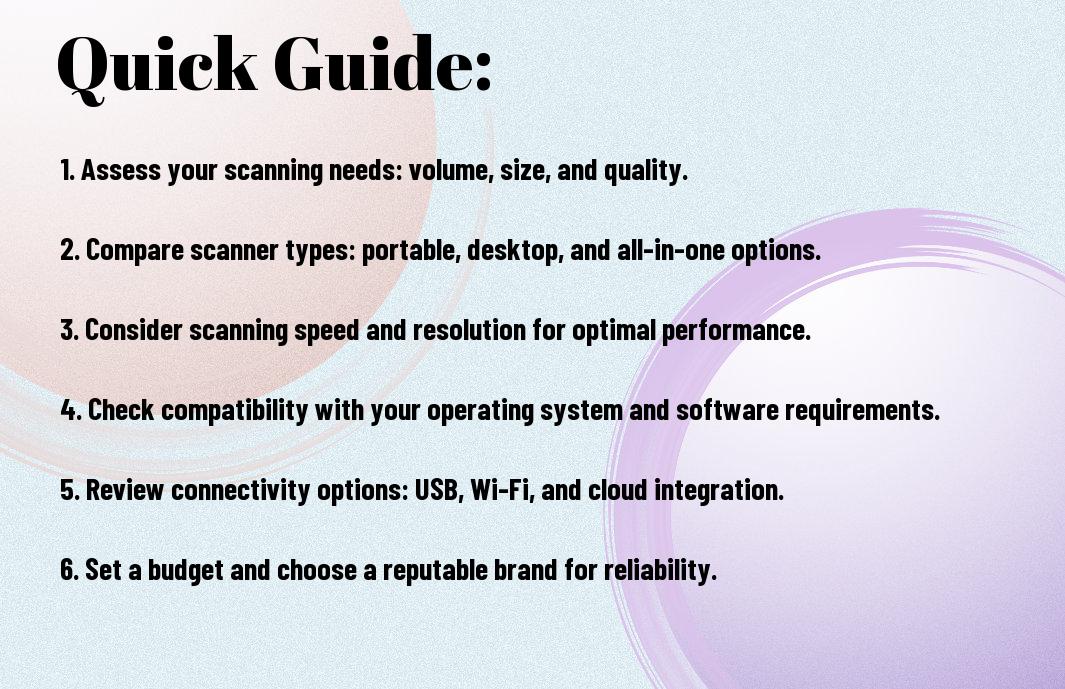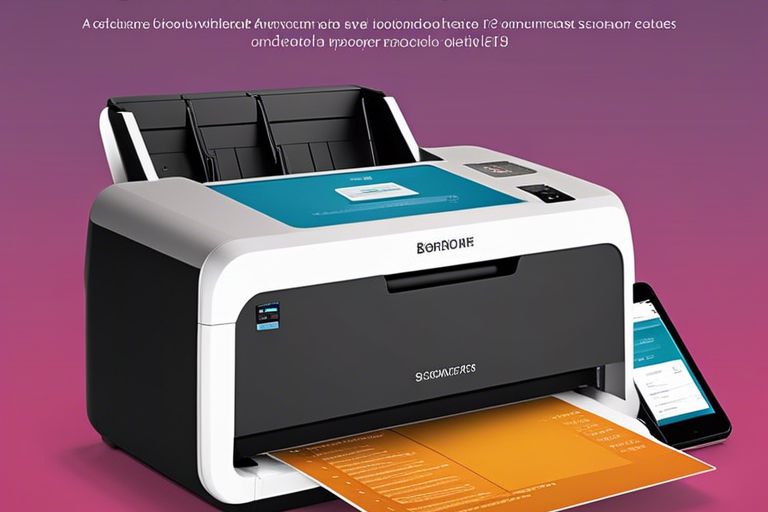The Definitive Guide to Selecting the Perfect Document Scanner for Your Needs
You know the importance of a good document scanner, whether for digitizing receipts, organizing files, or going paperless. But with so many options on the market, how do you choose the perfect one for your specific needs? In this comprehensive guide, we will walk you through everything you need to consider when selecting the ideal document scanner to suit your requirements and streamline your document management process.
Contents
Understanding the Types of Document Scanners
For individuals or businesses looking to invest in a document scanner, it’s crucial to understand the different types available in the market. Each type of scanner offers unique features and benefits tailored to specific needs. Below is a breakdown of the most common types of document scanners:
| Sheet-Fed Scanners | Flatbed Scanners |
| Photo Scanners | Portable Scanners |
Sheet-Fed Scanners
Even though sheet-fed scanners are compact and ideal for high-speed scanning of large volumes of documents, they may not be suitable for scanning delicate or oversized items.
Flatbed Scanners
If you need to scan books, magazines, or other irregularly shaped items, a flatbed scanner is the way to go. However, they can be slower and less efficient for scanning multiple pages at once.
Photo Scanners
There’s nothing beats a dedicated photo scanner when it comes to preserving cherished memories in high resolution. Photo scanners offer specialized features for enhancing and digitizing photographs with exceptional clarity.
Portable Scanners
Assuming you need to scan documents on the go or in various locations, portable scanners are lightweight and compact, making them perfect for travelers or professionals who require scanning flexibility.

Key Factors to Consider When Choosing a Document Scanner
Some key factors to consider when selecting the perfect document scanner for your needs include resolution and image quality, scan speed and capacity, connectivity options, and compatibility and integration.
Resolution and Image Quality
The resolution of a scanner determines the quality of the scanned images. Higher resolution scanners produce clearer and more detailed scans, making them ideal for documents with fine print or images.
Scan Speed and Capacity
On top of resolution, scan speed is another important factor to consider. The speed of a scanner is measured in pages per minute (ppm) or images per minute (ipm), indicating how quickly it can process and scan documents.
It is crucial to consider the scan capacity of a scanner as well. Scanners with larger automatic document feeders (ADFs) can handle bigger batches of documents in one go, increasing efficiency and reducing the need for manual intervention.
Connectivity Options
Capacity to transfer scanned documents directly to email, cloud storage, USB drives, or network folders. Scanners with Wi-Fi, Ethernet, or USB connectivity options offer flexibility in how you can access and store your scanned documents.
Choosing a scanner with multiple connectivity options ensures that you can easily integrate it into your existing workflow and share documents with colleagues or clients more efficiently.
Compatibility and Integration
Options to consider when choosing a document scanner include compatibility with operating systems and software applications commonly used in your organization, as well as integration with document management systems or other workflow tools.
A Step-by-Step Guide to Selecting the Right Document Scanner
| Assessing Your Scanning Needs | Evaluating Scanner Features and Specifications |
Assessing Your Scanning Needs
Any successful document scanner purchase starts with assessing your scanning needs. Consider factors such as the volume of documents you plan to digitize, the type of documents (black and white, color, double-sided), and whether you need special features like OCR (Optical Character Recognition).
Evaluating Scanner Features and Specifications
Selecting the right document scanner involves evaluating scanner features and specifications. Look at scanning speed, resolution quality, paper size compatibility, connectivity options, and any additional features like automatic document feeders or duplex scanning capabilities.
| Reading Reviews and Comparing Models |
Reading Reviews and Comparing Models
Clearly researching and reading reviews on different scanner models can provide valuable insights. Look for user feedback on reliability, ease of use, software compatibility, and overall performance to help narrow down your choices.
Models
When comparing models, pay attention to factors like price, warranty, customer support, and additional bundled software. Some scanners may offer better value for money or come with features that align more closely with your specific needs.
Testing and Evaluating Scanner Performance
If you have the opportunity, test and evaluate scanner performance before making a final decision. This hands-on approach can help you assess factors like scanning quality, speed, and usability in real-world scenarios.
This step is crucial in ensuring that the selected document scanner meets your requirements and performs as expected once in regular use.

Weighing the Pros and Cons of Different Document Scanners
Not all document scanners are created equal. When dicking out the perfect one for your needs, it’s crucial to weigh the pros and cons of different types available in the market. Below is a breakdown of the advantages and disadvantages of various document scanners:
| Advantages | Disadvantages |
| High scanning speed | Higher upfront cost |
| High optical resolution | Larger size and bulkier |
| Advanced image processing features | May require more maintenance |
| Automatic document feeders | Higher power consumption |
| Multiple connectivity options | Complicated setup process |
Advantages of High-End Scanners
Advantages of high-end scanners include faster scanning speeds, superior image quality, and advanced features such as automatic document feeders and multiple connectivity options.
Disadvantages of Low-Cost Scanners
Disadvantages of low-cost scanners may include slower scanning speeds, lower image quality, and fewer advanced features. These scanners may also be more prone to technical issues and may not have as many connectivity options.
For instance, if you are on a tight budget and need a scanner for basic document scanning tasks, a low-cost scanner may be sufficient. However, if you require high-quality scans with advanced features and faster speeds, investing in a high-end scanner may be more beneficial in the long run.
Conclusion
So, selecting the perfect document scanner involves carefully considering your specific needs, such as scanning volume, file type compatibility, and connectivity options. Understanding these factors will enable you to choose a scanner that best suits your requirements, ensuring efficient and effective document digitization for your home or office.



